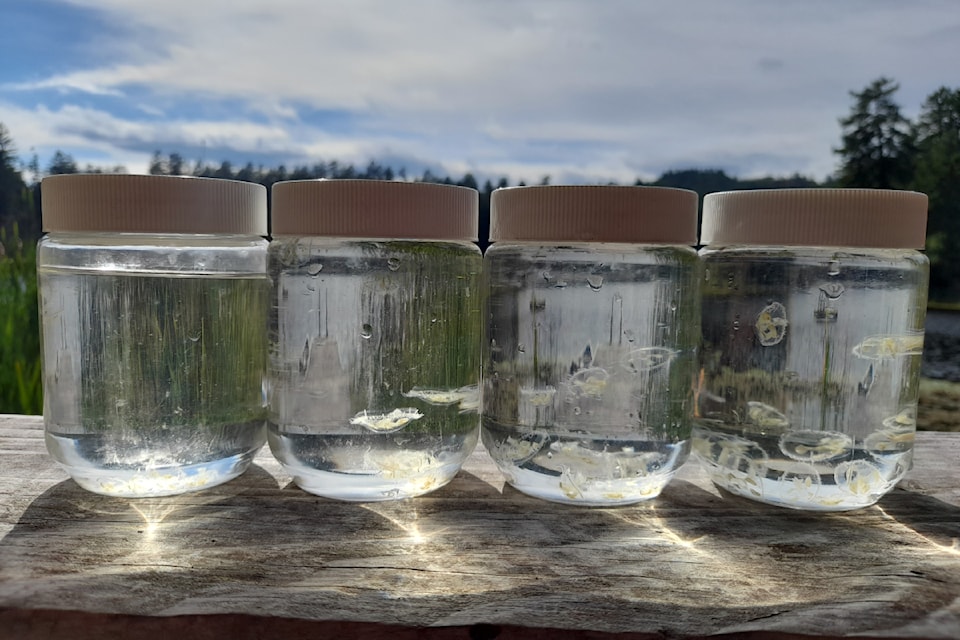A University of British Columbia researcher is predicting that sightings of an invasive, freshwater jellyfish could increase rapidly in the wake of climate change.
Dr. Florian Lüskow completed his research into the peach blossom jellyfish during his postdoctoral fellowship at UBC's department of earth, ocean and atmospheric sciences.
The peach blossom jellyfish clones have been spotted in 34 places in B.C., with a sighting in Pavilion Lake, just west of Cache Creek being the northernmost sighting in the province.
The first reported sighting was in August 1990, and they've mainly been found in the Lower Mainland, Vancouver Island and the Sunshine Coast, but more recently there have been sightings further inland in Osoyoos Lake. The paper adds that it cannot rule out peach blossom jellyfish in areas further north or east, but records don't exist.
"We know that of the 100 jellyfish examined so far, each has been male comprised of the same genetic material, which means these thousands of jellyfish are effectively clones and originated from the same polyp or a small cluster of polyps �㽶��Ƶֱ���the stage of a jellyfish which lives at the bottom of a body of water."
Dr. Evgeny Pakhomov, a professor with UBC's department of earth, ocean and atmospheric sciences and at the Institute for the Oceans and Fisheries said polyps are very small, usually about a millimetre in size, making it challenging to locate them.
Pakhomov said the jellyfish inhabit shallow areas and can be found on rocks and submerged wood debris. He said that researchers generally only know about the jellyfish in a body of water when the polyps form a "floating medusa," but that only happens when the water temperature is above 21 C. There is a seasonal pattern to the sightings, with Ju
"Polyps could be in many more lakes without us knowing about it. We do not know how and when introduction of the species occurred, but it was likely through medusa-producing polyps carried on recreational boats or on the bills or feet of birds when feeding," Pakhamov said.
There have been 85 sightings in this 34-year span, but Lüskow said each sighting "could be one or thousands of jellyfish." In this decade alone, he's predicting about 80 sightings in more than the 34 locations they've already been found in.
Lüskow's paper predicts that the sighting and number of locations will increase by the end of the decade as climate change persists.
Pakhomov said that if climate change leads to freshwater temperatures increasing across B.C., there will likely be a wider spread of the jellyfish �㽶��Ƶֱ��� even as far north as Alaskan reservoirs.
However, he added that so far only males, which are genetically identical, have been found. That means they cannot complete there sexual reproduction and adaptations to new environments will be limited.
Lüskow said he'd like to be able to use environmental DNA that can determine the DNA in a sample of water, which would allow them to find out if the jellyfish is present, even in its polyp form.
He added people who spot peach blossom jellyfish can submit a report to iNaturalist, the Invasive Species Council or B.C. or to him and Pakhomov.



